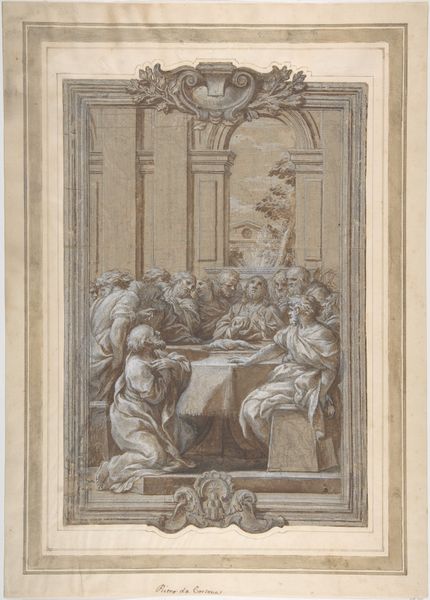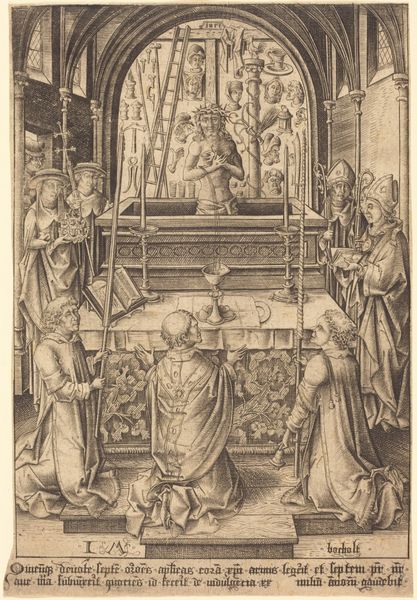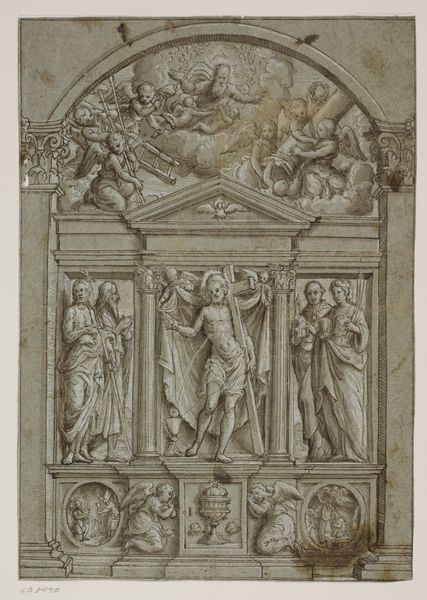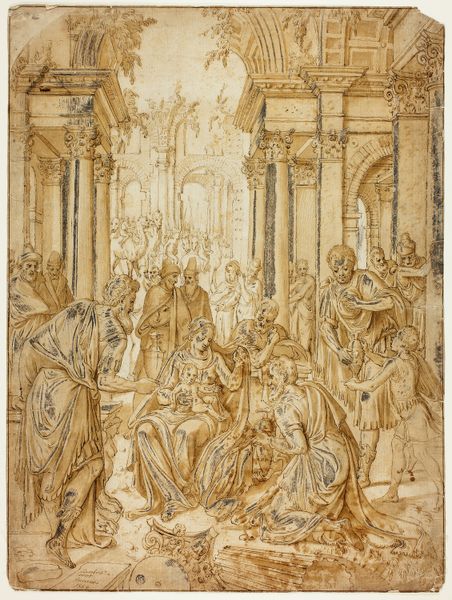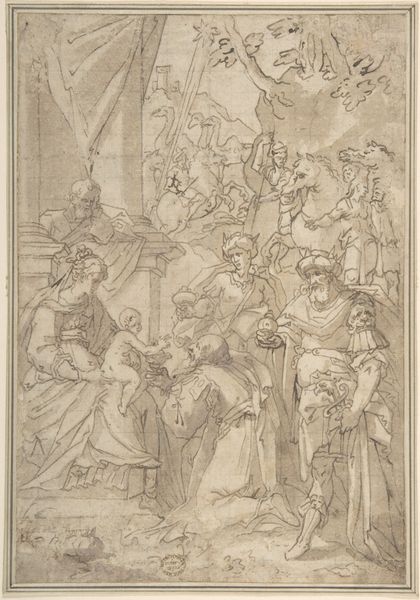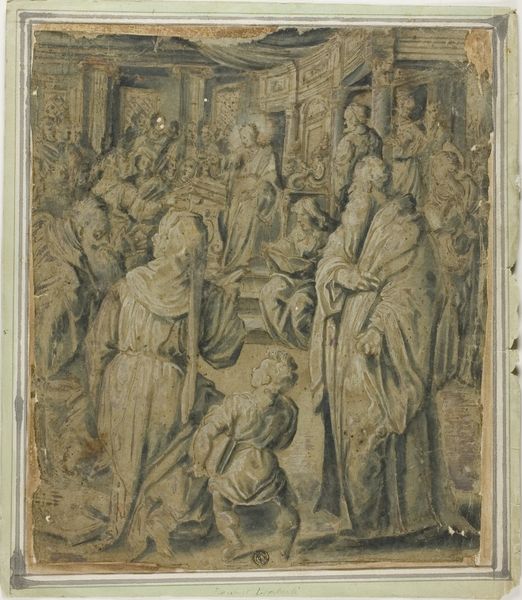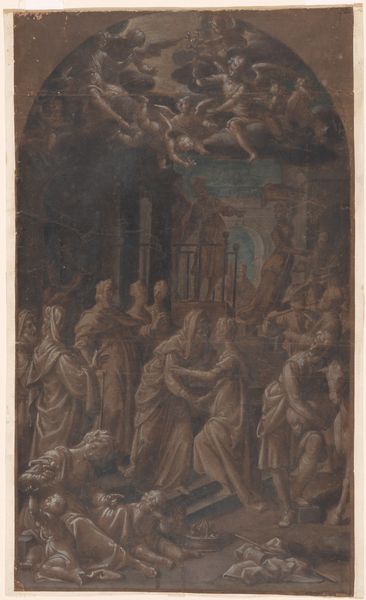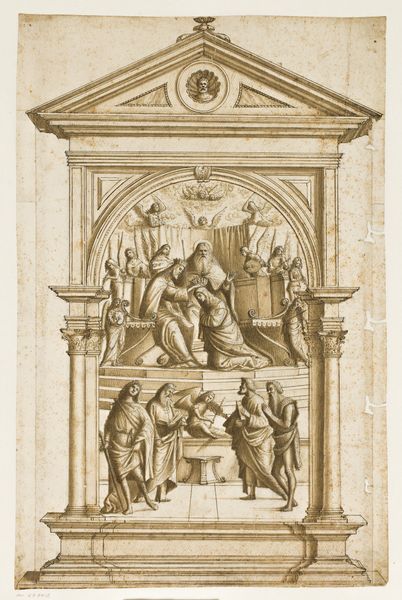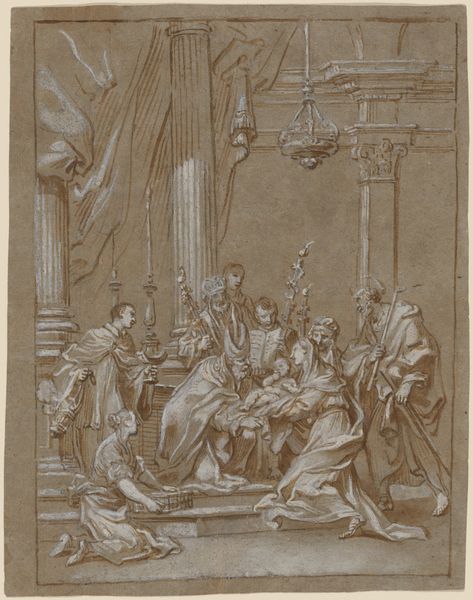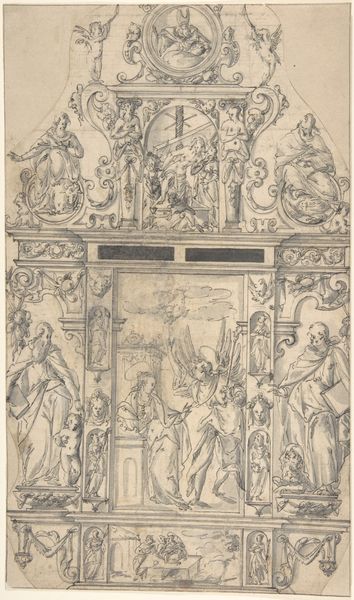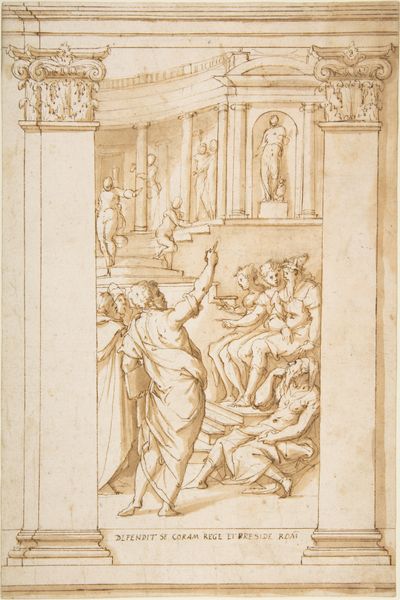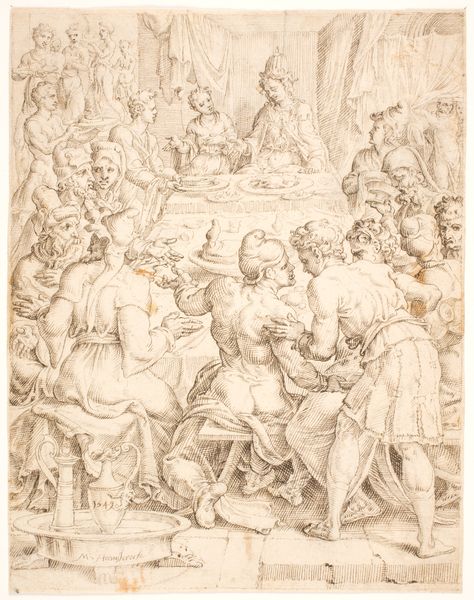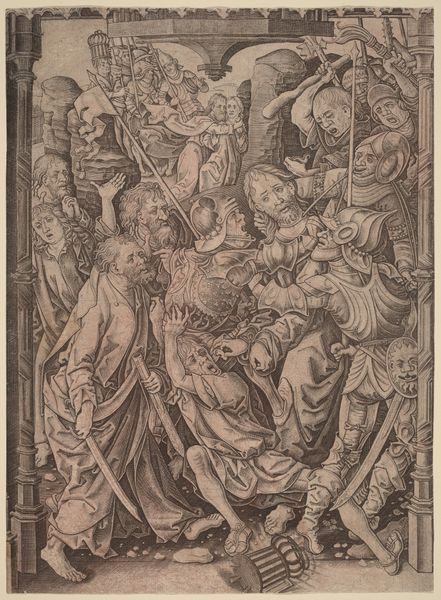
Saint Catherine Disputing with the Philosophers 1562 - 1563
0:00
0:00
drawing, print, gouache, paper, ink, ink-drawings, chalk, pen, engraving
#
drawing
# print
#
gouache
#
charcoal drawing
#
figuration
#
paper
#
charcoal art
#
ink
#
ink-drawings
#
chalk
#
pen
#
history-painting
#
academic-art
#
italian-renaissance
#
engraving
#
pencil art
#
watercolor
Dimensions: 505 × 395 mm (sight)
Copyright: Public Domain
Curator: Editor: Here we have Livio Agresti's "Saint Catherine Disputing with the Philosophers," made around 1562-1563, using pen, ink, chalk, and gouache. The intricacy is striking! It's incredible how much detail he achieved. What can you tell me about it? Curator: Let's consider the materials first. The blend of pen, ink, chalk and gouache - that immediately places this work in dialogue with both drawing and painting traditions. Agresti isn’t simply rendering an image; he's actively engaged with the processes of making itself. How do these materials speak to the social or political conditions of artistic production at the time? Editor: That’s an interesting point. Was it common to blend these materials so fluidly during the Italian Renaissance? It feels like the lines between drawing, painting and printmaking are blurred here. Curator: Exactly! By challenging those boundaries, Agresti subtly critiques the hierarchy of artistic practices. It compels us to think about artistic labor, consumption, and display. Are we, the viewers, meant to see this as a preparatory sketch for a larger work, or is this intended to be an object of art in itself? Editor: I hadn't considered that! The subject matter is quite grand and historical, so my immediate reaction was to view it as fine art, maybe for an aristocratic collection? Now I am questioning its function... Curator: Precisely! This tension forces us to reflect upon the means of production and its intended audience. What kind of patronage did Agresti have access to, and what role did materials play in shaping the value and reception of this piece within that network? Editor: Seeing the art through this materialist lens has definitely broadened my perspective, it is like I am investigating the context surrounding the work's creation as well as the work itself. Curator: And that's precisely the point. Understanding materiality brings us closer to comprehending art's complex relationship with labor, economics, and cultural value.
Comments
No comments
Be the first to comment and join the conversation on the ultimate creative platform.
